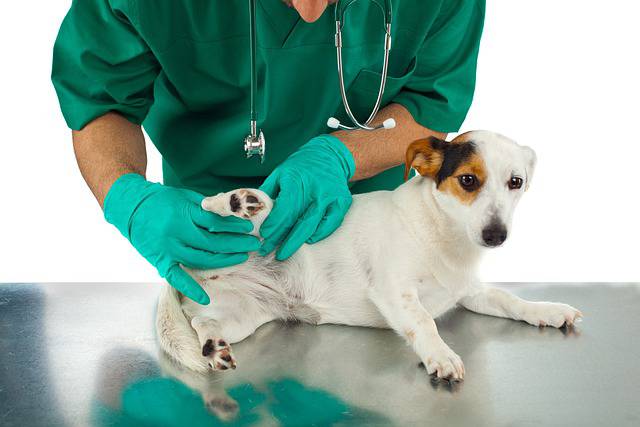How Long Do Tick Stay On Dogs (Explained)

If you’re like me, the thought of your furry companion getting a tick is enough to send shivers down your spine.
Not only can ticks be scary, but they can also transmit some dangerous diseases to our beloved pets.
That’s why I’m excited to share with you some insights on the question that has been on every dog owner’s mind: how long do ticks stay on dogs?
Keep reading to learn more about these pesky parasites and how long they stick around on our furry friends.
What are ticks, and why are they dangerous?
Ticks are parasites that feed on warm-blooded hosts like dogs by biting them.
They can carry bacteria, viruses, and protozoans that can cause diseases in humans and animals.
Some of these diseases can be very serious, including Lyme disease, babesiosis, and Rocky Mountain spotted fever.
Not all ticks are dangerous, but some species, such as the deer tick, can carry harmful germs that cause illness.
How Long Do Tick Stay On Dogs?
Ticks will bite and feed on dogs for up to a few days before dropping off.
The length of time a tick stays on a dog depends on whether it is disturbed and whether daily tick checks are performed.
Some ticks can complete a meal within hours, while others may take several days or even up to a week to finish feeding.
Larvae remain attached and feed for about three days, nymphs for three to five days, and adult ticks can live for up to two years without food.
It is important to remove ticks as soon as possible, as dogs who have an engorged tick attached to their skin for more than 24 hours are at risk for tick-borne diseases.
Different ways dogs can get ticks
Here are several common ways that dogs can get ticks:
- Being outside in areas where ticks are prevalent, such as wooded areas, brushy fields, and tall grass.
- Walking on trails where other animals, such as deer and rodents, have been known to carry ticks.
- Playing in leaf litter or debris that may harbor ticks.
- Coming into contact with other animals, such as farm animals or wildlife, that may be carrying ticks.
- Being in close proximity to other dogs or pets that have ticks.
- Being groomed or petted by humans who have unknowingly been in contact with ticks.
- Traveling to areas where ticks are prevalent, such as camping or hiking destinations.
- Riding in cars or other vehicles where ticks may be present on the seats or carpeting.
- Not being on tick-prevention medication or using an ineffective prevention method.
- Walking in tall grass or wooded areas where ticks are commonly found.
- Coming into contact with ticks that have dropped off of other animals and become embedded in the environment, such as in grass or underbrush.
Symptoms of Ticks in Dogs
Here are the symptoms a dog can show if they have ticks, which are as follows:
- Lethargy and weakness: Ticks can cause dogs to feel tired and lethargic. They may also become weak and have difficulty standing or walking.
- Loss of appetite: Infected dogs may lose interest in food and stop eating altogether.
- Joint pain and stiffness: Ticks can cause inflammation in the joints, leading to stiffness and pain.
- Lameness: Dogs may experience limping or lameness, which can be a sign of tick-borne diseases such as Lyme disease.
- Fever: Infected dogs may develop a fever as their body tries to fight off the infection.
- Skin rash or irritation: Some dogs may develop a rash or other skin irritations at the site of the tick bite.
- Swollen lymph nodes: Dogs may develop swollen lymph nodes as their immune system tries to fight off the infection.
- Respiratory distress: Tick-borne diseases like Rocky Mountain spotted fever can cause respiratory distress in dogs.
- Neurological symptoms: In severe cases, ticks can cause neurological symptoms such as seizures or paralysis.
Learn more about common signs your dog is sick.
How To Remove A Tick From Your Dog

To remove a tick, carefully remove it with a tweezer or get a sharp pair of scissors.
- Use fine-tipped tweezers to grasp the tick as close to the skin’s surface as possible.
- Pull upward with steady, even pressure. Don’t twist or jerk the tick, which can cause it to startle and move.
- After the tick is removed, thoroughly wash the bite area and your hands with soap and water.
- Check to make sure it’s dead. If you can’t tell, check to make sure you have it in the right spot.
- Always keep a picture of the tick you remove from your dog in case something else comes up.
Learn more about how you can comfort a sick dog.
How to Prevent Ticks From Attacking Your Dog
Here are the common ways to prevent ticks from attacking your dog:
- Use tick preventatives: Talk to your vet about which tick preventative is best for your dog. You can choose from oral medications, topical treatments, and collars that repel ticks.
- Keep your yard clean: Mow your lawn regularly, remove weeds and debris, and keep the grass short to reduce the habitat for ticks. Trim any low-hanging branches as well.
- Check your dog regularly: After your dog spends time outdoors, check them thoroughly for any ticks. Pay attention to the ears, underbelly, and between the toes.
- Be cautious on walks: Avoid taking your dog through areas with tall grass or wooded areas, as these are common tick habitats. Stick to trails or cleared paths if possible.
- Use tick-repellent sprays: There are many natural and chemical-based sprays available that repel ticks. Some are applied directly to your dog’s coat, while others can be used on clothing and gear.
- Keep your dog on a leash: This will prevent them from wandering off into tick-infested areas when out for a walk.
- Consider tick control for your yard: There are yard sprays and treatments available that can repel ticks and reduce their population in your yard.
- Wash your dog’s bedding: Regularly washing your dog’s bedding and toys can help reduce the chances of ticks infesting these items.
- Regular grooming: Regular grooming and bathing can help prevent ticks from attaching to your dog. Additionally, long-haired dogs may benefit from a trim to reduce the areas ticks can latch to.
Learn more about how to improve your dog’s health.
What To Do If You Find A Tick On Your Dog
If you find a tick on your dog, it is important to remove it as soon as possible to prevent the transmission of diseases.
To remove a tick, grasp it as close to your dog’s skin as possible and pull it out slowly in a straight, steady motion.
Do not jerk or twist the tick, as this could leave parts of it behind and lead to infection.
If the tick is not embedded, simply pluck it from your dog’s fur and dispose of it.
After removing the tick, dab rubbing alcohol on the area to disinfect it. If you are uncomfortable removing the tick, you can take your dog to a veterinarian for assistance.
Related questions
Can Ticks Stay On Dogs For Months?
Yes, a tick will stay on a dog for months until the tick is 10 times its original size then fall off the dog and continue its lifecycle.
That is why you should always encourage good grooming practices because you can always find out ticks when grooming your dog once a week.
Could Your Dog Have Ticks Without You Knowing?
Yes, your dog can have ticks without you knowing until the tick has grown big due to the blood it has sucked from your dog.
The tick will definitely fall off your dog after sulking a good amount of blood from your dog.
How can I tell if my dog has a tick?
Ticks are often found in areas like the neck, head, and ears of dogs.
You can perform a thorough inspection of your dog’s fur to see if you can find any ticks.
You can also look out for symptoms in your dog, such as lethargy, fever, or joint pain, which can be signs of a tick-borne disease.
How can I remove a tick from my dog?
To remove a tick from your dog, you should use fine-tipped tweezers to grasp the tick’s head as close to the dog’s skin as possible.
Pull the tick straight out, slowly and steadily, without twisting or jerking.
After removing the tick, clean the area with soap and water and apply an antiseptic.
Conclusion
In conclusion, it’s important to keep an eye on your furry friend for any signs of ticks.
These pesky parasites can cause serious health issues for your dog if left untreated.
Remember, prevention is key!
Regularly check your dog for ticks and use preventative measures such as tick collars or medication.
By taking these steps, you can ensure your dog stays healthy and happy for years to come.
For further reading on ticks.




![How to Treat a Broken Dog Nail [A Step By Step Guide] How to Treat a Broken Dog Nail](https://petcreeks.com/wp-content/uploads/2023/09/igor-bumba-V9JMh9A-10E-unsplash.jpg)

